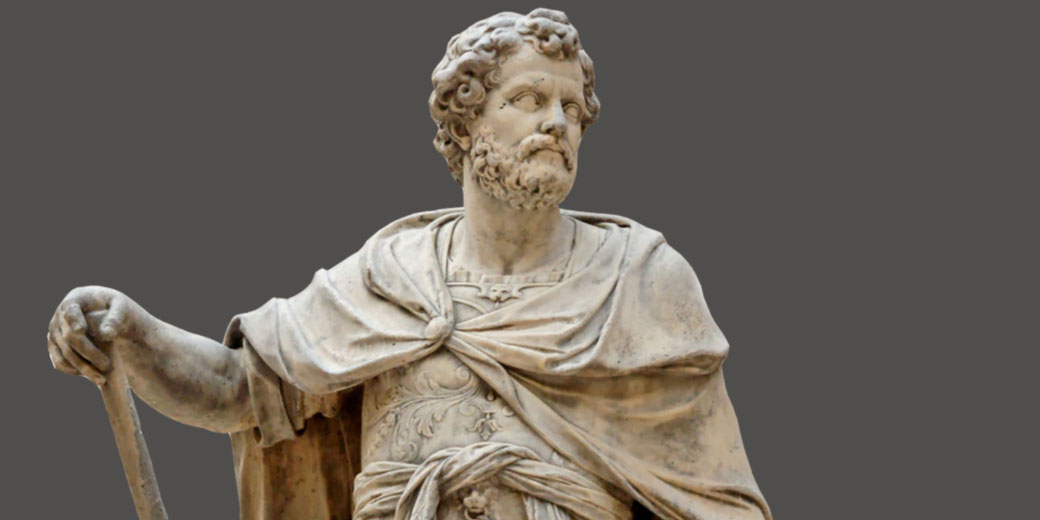Why did Hannibal count gold rings after his massacre of the Romans at Cannae?

After the spectacular victory at Cannae, Hannibal turned the battlefield into a stage for political display. The gold rings that had been stripped from Rome’s slain nobles were used as a kind of prop in an intense performance of military power.
When Hannibal publicly counted them, he wanted to stress the scale of Rome’s losses in a way that no amount of propaganda back in Rome could deny.
It was a staggering amount and an emblem of Rome’s new, very vulnerable, position in the war.
How was Rome defeated at Cannae?
The Second Punic War had began in 218 BCE after growing tensions over control of Spain and trade routes in the western Mediterranean had reached a breaking point.
Hannibal had already inflicted two major defeats on Roman armies at Trebia in 218 BCE and Lake Trasimene in 217 BCE, and his success emboldened him to challenge Rome in an important battle.
Roman confidence in their superior manpower led them to raise an army of around 86,000 soldiers.
It included large numbers of allied troops from across Italy.
Gaius Terentius Varro and Lucius Aemilius Paullus commanded this massive army, which they believed could finally destroy Hannibal.
The Carthaginian general commanded approximately 50,000 men, of whom about 10,000 were cavalry, yet he possessed a much better tactical mind than his opponenets.
At Cannae in 216 BC, Hannibal relied on a plan that exploited Roman overconfidence and their tendancy to rely on some very predictable tactics.
He arranged his army with Celtic and Iberian infantry in the centre. Next, he placed his best African heavy infantry on the flanks and his cavalry, under Hasdrubal and Maharbal, on the wings.
As the Romans advanced in a dense formation, Hannibal’s centre gave ground in a planned retreat that drew the legions further forward.
The Roman soldiers pressed into the pocket created by this manoeuvre, unaware that they were being lured into a trap.
At the same time, Hannibal’s cavalry routed the Roman cavalry and then swept in behind the legions, while his African infantry turned inward from the flanks to complete the surrounding.
The slaughter was immense, and ancient sources such as Polybius and Livy recorded that between 50,000 and 70,000 Romans died on the battlefield.
Hannibal’s losses were lower, with Polybius estimating about 5,700 men, most of whom were Celts and Iberians.
Lucius Aemilius Paullus died in the fighting, whereas Gaius Terentius Varro survived and later returned to Rome.
In addition, around 10,000 Romans were taken prisoner.
The sheer scale of the loss left Rome in shock, and the battle became a textbook example of the double‑envelopment attack, which military commanders continued to study for centuries.
Hannibal and the golden rings
After the battle, Hannibal ordered his soldiers to gather the gold rings worn by senators and equestrians, since Roman law restricted this privilege to the upper classes.
The rings provided a clear record of how many of Rome’s leaders had perished. Livy wrote that the number of rings filled about three and a half modii,
This was a clear sign of Rome’s humiliation.
Hannibal sent a portion of the rings to Carthage, where they were poured out before the Carthaginian Senate as evidence of his victory.
Ancient writers described how his brother Mago presented the rings and urged the Senate to send extra troops while Rome seemed close to collapse.
Hannibal hoped that such a display would convince his government to send aid and encourage Rome’s allies to abandon the Republic.
The rings had some practical value as well because they could be melted down for gold, yet their symbolic power was far greater.
In fact, the city of Capua switched sides to Hannibal soon after the battle, and Tarentum followed several years later, which showed that his information campaign initially achieved some success.
How did Rome respond?
However, Rome refused to surrender, even though the losses at Cannae had devastated the state’s military leadership.
The Senate rejected Hannibal’s attempt to arrange a prisoner exchange and instead ordered new legions to be raised.
To meet the urgent need for manpower, the state lowered the age for military service, enlisted slaves and criminals, and minted bronze coinage to cover expenses.
Survivors of Cannae were reorganised into new units and exiled to Sicily as punishment for their defeat.
Also, the Republic adopted a wearing-down strategy, and its armies avoided pitched battles with Hannibal.
Roman forces cut off his supply lines, took back defected cities, and struck at Carthaginian armies in Spain, which deprived Hannibal of crucial reinforcements.
Quintus Fabius Maximus, who was known as Cunctator or "the Delayer," had already advocated for caution, and his approach gained further support after Cannae.
His strategy relied on harassing Hannibal and wearing down his resources rather than risking another defeat in open battle.
Over time, Rome recovered its strength, and Hannibal’s failure to win decisive support from Carthage or to secure lasting loyalty from more of Rome’s Italian allies left him unable to force Rome to submit.
As a reult, the rings that Hannibal had once counted as trophies of victory became a reminder of his inability to convert battlefield success into political conquest.
Finally, Scipio Africanus invaded Africa in 204 BCE, and two years later he defeated Hannibal at the Battle of Zama in October 202 BCE, which ended the Second Punic War and secured Roman supremacy in the western Mediterranean.
What do you need help with?
Download ready-to-use digital learning resources
Copyright © History Skills 2014-2025.
Contact via email
With the exception of links to external sites, some historical sources and extracts from specific publications, all content on this website is copyrighted by History Skills. This content may not be copied, republished or redistributed without written permission from the website creator. Please use the Contact page to obtain relevant permission.





